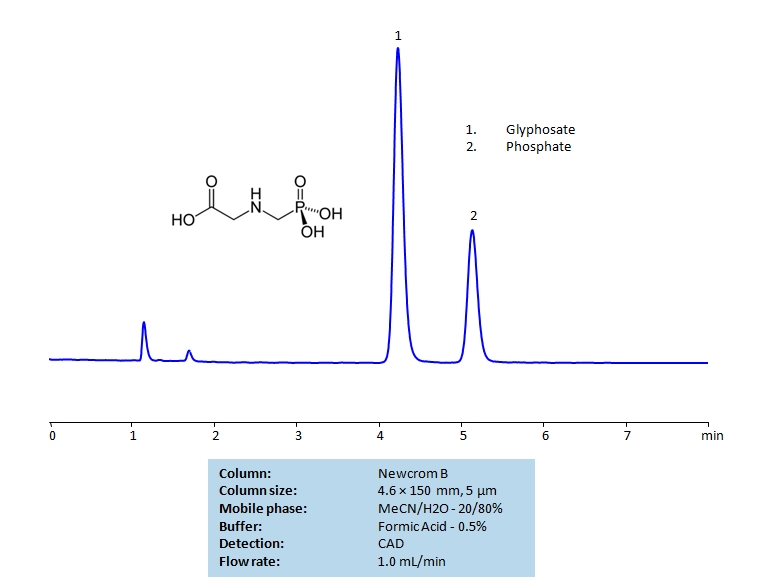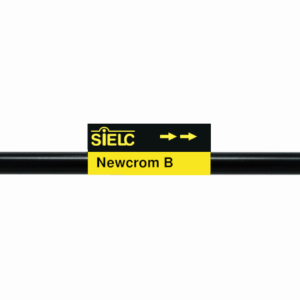Separation type: Liquid Chromatography Mixed-mode
![]()
View on hplc.cloud

High Performance Liquid Chromatography (HPLC) Method for Analysis of Glyphosate and Phosphate Ion
Glyphosate is a broad-spectrum herbicide which is used to kill weeds. The presence of glyphosate is strongly regulated by various governing agencies in the US, Europe, and Asia. Glyphosate is characterized by its carboxylic acid and phosphate group on either end.
Glyphosate and phosphate ions can be retained and separated with a Newcrom B mixed-mode column using a mobile phase consisting of acetonitrile (MeCN), water, and formic acid (H3PO4) as a buffer. This method is compatible with mass spectrometry and be detected via a Charged aerosol detector (CAD).
| Column | Newcrom B, 4.6×150 mm, 5 µm, 100A |
| Mobile Phase | MeCN – 20% |
| Buffer | Formic Acid – 0.5% |
| Flow Rate | 1.0 ml/min |
| Detection | CAD |
| Class of Compounds |
Insecticide, Herbicide, Fungicide, Hydrophobic, Ionizable |
| Analyzing Compounds | Phosphate, Glyphosate |
Application Column
Newcrom B
The Newcrom columns are a family of reverse-phase-based columns. Newcrom A, AH, B, and BH are all mixed-mode columns with either positive or negative ion-pairing groups attached to either short (25 Å) or long (100 Å) ligand chains. Newcrom R1 is a special reverse-phase column with low silanol activity.
Select optionsPhosphate





